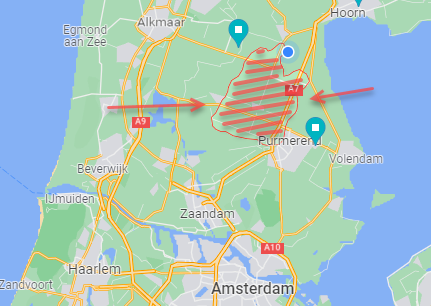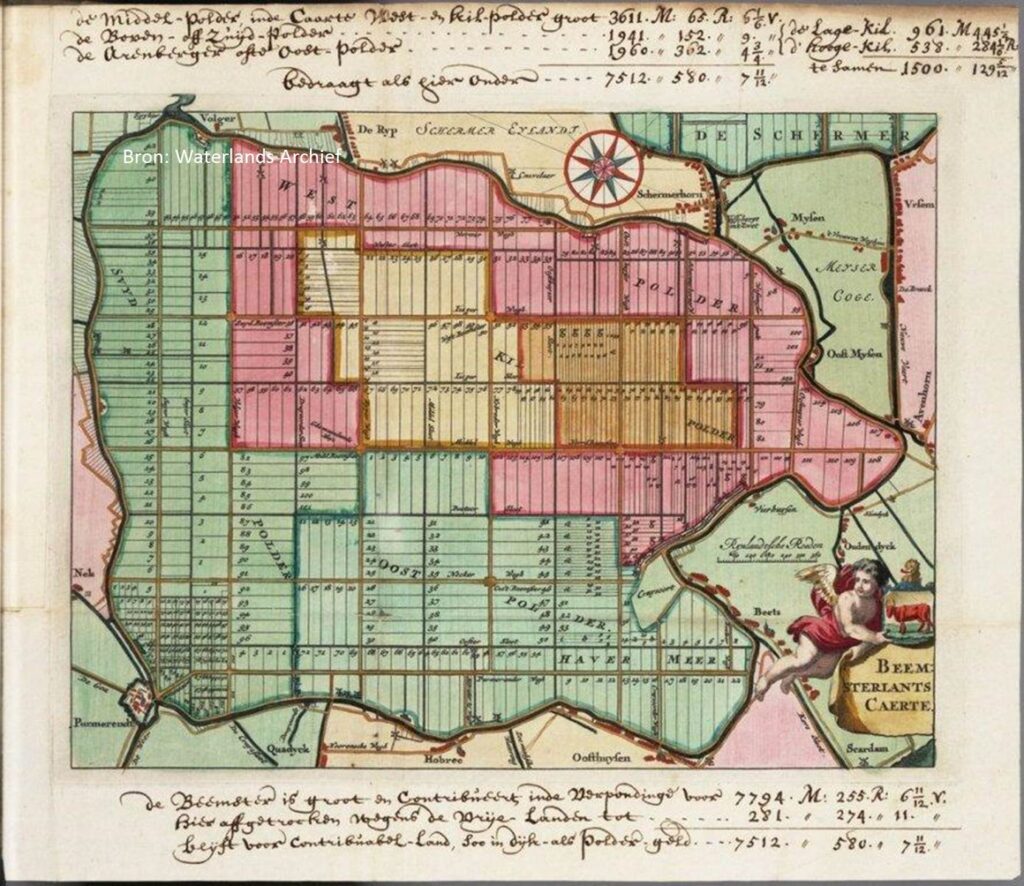The Beemster is one of the first so-called polders (droogmakerij) in the Netherlands that was reclaimed, in 1612, from a lake.


Droogmakerij the Beemster (Beemster Polder) was constructed in 1612 as one of the first initiatives in Holland in reclaiming agricultural grounds from the water. The new land has been obtained by extracting the water out of Beemster Lake by 43 watermills. The area covers 72.08 km² and lies on average 3.5 meters below sea level. The new land was used for farming and a lot of rich people from the wealthy city of Amsterdam built their second home here. These lavish houses and characteristic watermills have long since almost all disappeared, but the structure of roads, canals, dykes and grounds have remained: the polder is characterized by its austere layout with perpendicular straight roads and canals and the area is split in squares of 1800 meters. Because of this ingenious master plan, UNESCO designated the Beemster a World Heritage Site in 1999.
Municipality the Beemster nowadays has about 10. 000 inhabitants.
More information about the Beemster
- Droogmakerij de Beemster (Beemster Polder) , on the official unesco website
- Stichting Promotie Beemster Werelderfgoed, een samenwerkingsverband tussen de lokale overheid, ondernemeres en culturele organisaties (musea).